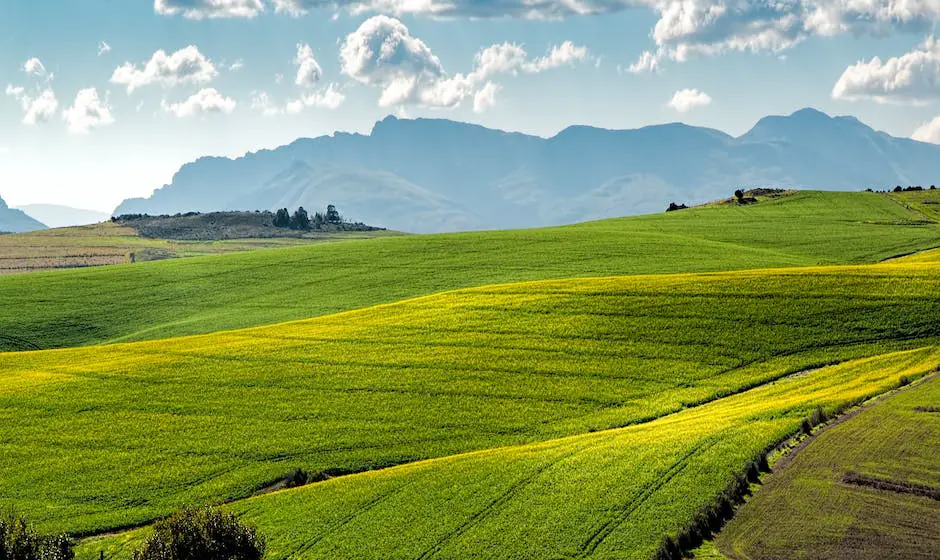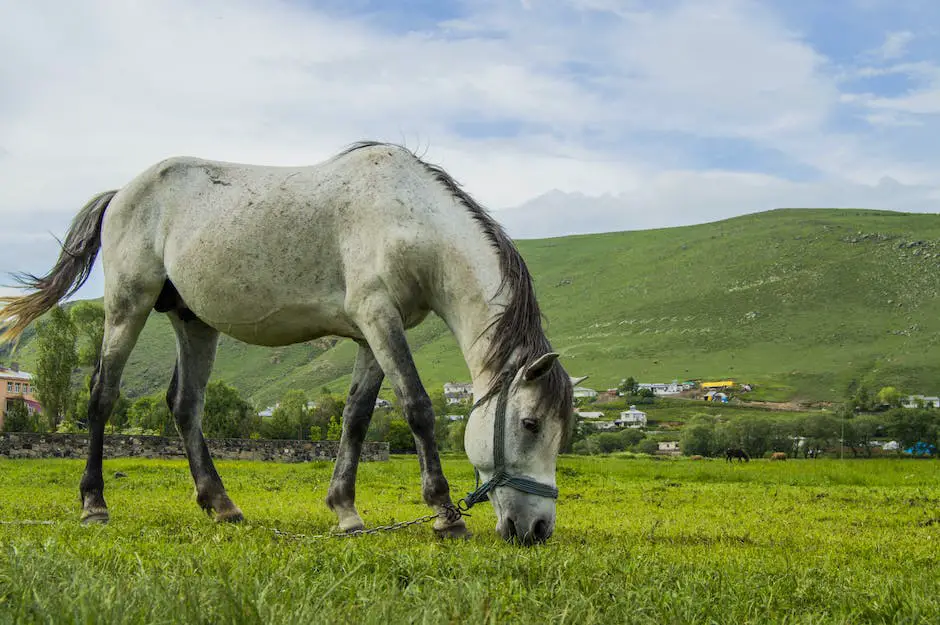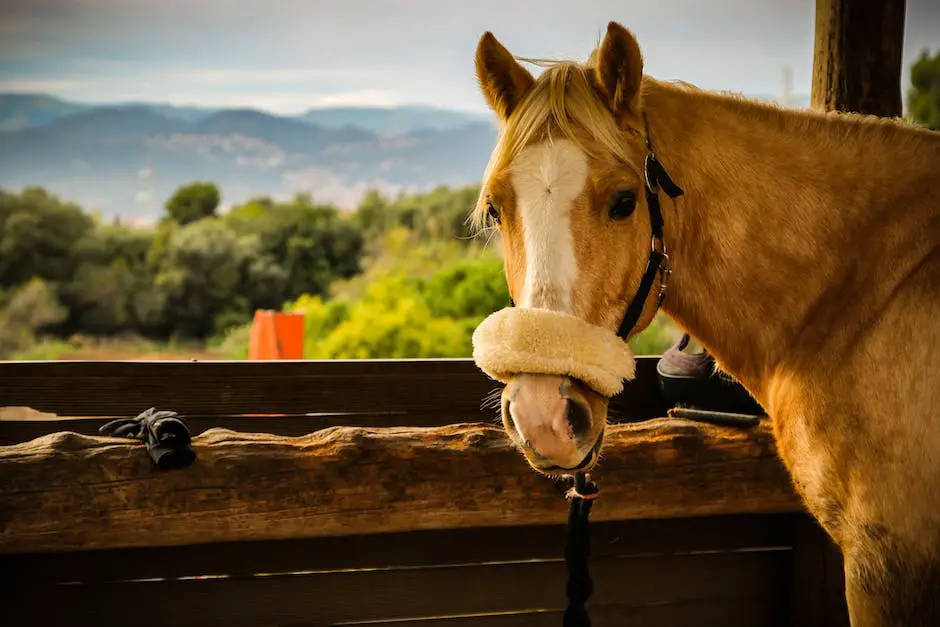Steeped in rich history and renowned for its remarkable traits, the Mecklenburger Horse stands as a symbol of grace, agility, and resilience. Originating in the picturesque region of Mecklenburg, Germany, this breed echoes a significant past, reflecting its evolution over time, while illuminating its adaptability across various disciplines. From acting in wars to aiding in agriculture and emerging as a star in sports, this majestic being has etched its name in the annals of horse breeds. Within the essay, we will delve into the intriguing world of the Mecklenburger, unraveling the various aspects that make it remarkably unique and crucial in the equine world, from their appearance and demeanor to health and care, performance, and the steps initiated for preservation.
Table of Contents (Horspedia)
History of the Mecklenburger Horse
Early History of the Mecklenburger Horse
The Mecklenburger horse traces its origin back to the 13th century, first bred in the Mecklenburg-Vorpommern region of Germany. The initial agricultural uses for the Mecklenburger Horse popularized the breed among the farmers and landowners of the region.
Development of the Breed
Throughout the 18th and 19th centuries, the Mecklenburger Horse underwent various breeding exercises, merging traits of native Prussian breeds with Thoroughbreds, Hanoverians, and Oldenburgs, creating a reliable multi-purpose horse. This mixture created a horse of strength and endurance, solidifying its popularity in tactical and agricultural uses.
Tactical and Practical Utilization
Historically, the Mecklenburger Horse was significantly used by the German army during times of warfare due to its impressive physical characteristics and endurance. Their size, calm disposition, and willingness to work also made them ideal for farming, pulling heavy loads, and other labor tasks.
Sporting Achievements: Showjumping and Dressage
In the 20th century, the Mecklenburger breed was refined for equestrian sporting events. The modern Mecklenburger is known for its propensity for showjumping and dressage, having seen significant success in international competitions. They have earned recognition for their versatility, power, and agility, contributing to their global appeal.
Modern Day Mecklenburger Horse
Today, Mecklenburger Horses continue to be bred for their strong physical qualities and fantastic work ethic. They are highly sought after for their abilities in various equestrian disciplines, from showjumping to dressage, to driving and general riding. The Mecklenburger Horse is also valued for being good-natured and reliable, making them popular for amateur riders and professionals alike.
Conservation and Recognition of the Mecklenburger Horse
The Mecklenburger Horse, a breed native to Germany, enjoys a stable population due to the conservation efforts of the Food and Agriculture Organization. This breed is both recognized and protected in Germany, with strict breeding regulations firmly in place to maintain the purity and integrity of the Mecklenburger lineage. Intense breeding initiatives are carried out both in their home territory of Mecklenburg-Vorpommern and around the world to ensure the survivability and continuous growth of this breed.

Breed Characteristics and Temperament
An Overview of Mecklenburger Horse’s Physical Characteristics
Originating from the German state of Mecklenburg-Vorpommern, the Mecklenburger Horse is a sport horse breed celebrated for its incredible size and strength, yet noted for its fine elegance and athletic prowess. This breed usually heights between 16.1 to 17.3 hands (65 to 73 inches), placing it amidst the larger horse breeds.
The Mecklenburger Horse features a delicately sculpted head, expressive large eyes, and a straight, wide forehead. It has a sturdy and relatively longer neck, which leads down to broad shoulders and a powerful, muscular back. With a deep, extensive chest and solid legs, accompanied by strong-jointed feet, the Mecklenburger is a model of durability and robustness.
Primarily, these beautiful horses are found in darker shades such as black, brown, and bay. Occasionally, variations in chestnut, grey, and even rare hues like palomino or roan can be found.
Mecklenburger Horses’ Temperament and Typical Behaviors
As for their temperament, Mecklenburgers are known to be reliable, gentle, and easy to manage, making them suitable for riders of all levels including beginners. They appreciate human company and often build strong bonds with their handlers.
Due to their amiable and predictable nature, they are often used for dressage, show jumping, and eventing, but their calm demeanor also makes them ideal for leisure riding. Despite their size, they have a good balance and display great flexibility and coordinated movement.
This breed is known for its affordability and willingness to work, making it popular amongst professional riders and amateur equestrians alike. They possess great commitment to their tasks and are characterized by their courage, stamina, and speed.
Life Expectancy
Usually, horses have a life expectancy of about 25 to 30 years, but with good care and genetics, Mecklenburger horses can live beyond this average. Like all large breeds, they are somewhat prone to joint issues but this can be managed with regular veterinary care and proper diet and exercise. They are typically hardy animals, known for their longevity and ability to remain active into their senior years.
Providing a thorough understanding of the Mecklenburger horse, from their physical attributes and temperament to their life expectancy, can significantly simplify any decisions you may have regarding this breed. This horse is a unique blend of power and elegance marked by a peaceable demeanor. Its popularity among diverse equestrian environments, whether for sports or leisure, is a testament to its exceptional qualities.

Use and Performance
Wide-Ranging Applications of Mecklenburger Horses
Widely admired for their versatility, Mecklenburger horses excel in an array of equestrian disciplines. Equipped with innate agility, strength, and accuracy, this breed has a prominent presence in dressage, eventing, and jumping. Their heightened sensitivity to rider signals and commendable stamina and speed make them perfect contenders in competitive sports.
Beyond the equestrian sports arena, Mecklenburgers demonstrate their worth in agricultural contexts. Their robust physique along with a mentality to match, aids them in undertaking fieldwork or transporting heavy loads. Historically, these horses were used extensively on farms for draft and work purposes, furnishing more evidence to their durability and adaptability.
Fast forward to the present, the Mecklenburger breed has found its place in equine-assisted therapy programs. Their calm demeanor, affability, and easygoing nature are characteristics highly sought after in therapy animals. The steady disposition and expressive body language of these animals enable them to form influential connections with patients in therapeutic riding sessions.
The Mecklenburger breed’s adaptability extends to leisure riding as well. They are quick learners, easygoing, and always willing to accommodate their riders, making them an excellent choice for individuals who ride for recreation, regardless of their expertise level.
Performance of Mecklenburger Horses
The performance of Mecklenburger horses is undoubtedly exceptional. They have a notable presence in dressage, skillfully executing precise movements and following complex instructions. This has earned them a sterling reputation in national and international competitions, with some even making appearances at the Olympic Games and World Equestrian Games.
Beyond dressage, the Mecklenburger also excels in eventing and jumping. Their remarkable athleticism and stamina have won them numerous prizes in these physically demanding disciplines.
This breed is also known for its utility in agriculture, using their endurance and strength to work efficiently where traditional methods are still in use, despite the prevalence of machinery.
In the context of therapy, the Mecklenburger proves to be invaluable as well. Their calm temperament and steady nature make them ideal for forming therapeutic relationships with patients, boosting both physical and emotional health.
Lastly, as leisure horses, Mecklenburgers shine due to their easy trainability, intelligence and friendly disposition which all contribute to a wonderful recreational riding experience.

Health and Care
Health Related Concerns in Mecklenburger Horses
Despite their sterling performance record, Mecklenburger horses are subject to several health concerns like other breeds. Lameness tends to be a common issue with them, which can stem from conditions like soft tissue damage, hoof abscesses, or bone fractures. Performing regular checks on the horse’s hooves, legs and movements is integral in early detection of lameness.
Another frequent health problem is equine metabolic syndrome (EMS). Due to the Mecklenburger’s predisposition towards obesity, they are at a higher risk of developing EMS, which is marked by excessive fat deposits, insulin resistance, and a high chance of laminitis. A well planned diet and exercise regimen can significantly help in managing this risk.
Health concerns that may manifest with age, such as arthritis, dental disease, and liver or kidney diseases are other potential issues. Regular veterinary checks, a balanced diet, and a clean, safe living environment can vastly reduce the risk of these issues.
Veterinary Care for Mecklenburger Horses
Regular visits from a vet are key to ensuring the health and longevity of a Mecklenburger Horse. Routine care includes dental checks to prevent related diseases, and regular vaccinations to protect against diseases like equine influenza, tetanus, and rabies. Regular deworming is also crucial to prevent intestinal parasite infestations.
Identifying potential health issues early is also a primary part of veterinary care. Horses should be semi-annually assessed for weight and body condition, with changes addressed immediately through diet and exercise adjustments.
Routines for Feeding, Daily Care, and Exercise
Mecklenburger horses need a safe, clean shelter and ample room for physical activities as a part of their everyday care. Regular grooming not only ensures the horse’s aesthetic appeal and comfort but is also an ideal time to look for issues such as skin conditions, parasites, or injuries.
In regard to their diet, it should be high in fiber with sufficient portions of proteins, carbohydrates, vitamins, and minerals. The bulk of their diet should come from hay and grass, complemented with grain supplements as necessary. Avoid overfeeding as this can lead to obesity and represents a risk for Equine Metabolic Syndrome (EMS). Therefore, feeding quantities should be meticulously calculated and adjusted to cater to the horse’s size, age, workload, and overall health state.
Regular physical activities like riding, lunging, and open pasture turnout are essential for the mental and physical health of a Mecklenburger Horse. Known for their endurance and athletic prowess, this breed flourishes under diverse and continual exercise routines.

Preservation and Future of the Breed
Conservation Efforts for the Mecklenburger Breed
The Mecklenburger Horse, originating from the Mecklenburg-Vorpommern region of Germany, continues to prosper despite enduring centuries of change, thanks to consistent conservation methods. Key to preserving this breed is to maintain a robust genetic pool via regulated breeding and accurate record-keeping in herd books. Selective breeding is instrumental to upholding the breed’s genetic integrity and durability, while herd books contain vital records of bloodlines. Working in unison with international breeders and assorted equestrian organizations, the Mecklenburger breeders association in Germany is committed to preserving this unique breed.
Population Status of the Mecklenburger Horse
The population of Mecklenburger horses is stable, with an increase in the number of special breeding programs and interest in the breed for various equestrian activities. In fact, population figures suggest that there are around 5,000 Mecklenburger horses in Germany alone. Globally, this figure is higher, demonstrating the breed’s popularity.
Adaptability to Climate Change
In terms of responding to climate change, the Mecklenburger horse is a sturdy breed that adapts well to different weather conditions. They are bred to tolerate severe European winters and warm summers, making them fairly adaptable to changing climatic conditions. However, rising global temperatures and increasingly unpredictable weather patterns may pose challenges to the breed, necessitating further investigation and possibly adjustment in breeding and keeping practices.
The Future Job Roles of the Mecklenburger Horse
Historically, the Mecklenburger horse was bred for farm work but its contemporary use is more prevalent in sports and leisure activities. The breed’s adaptability, intelligence, and power mean that it has continuously stayed relevant in its evolving job roles. Moving forward, it is likely to continue as a popular choice in dressage, jumping, eventing, and leisure riding.
Genetic Advancements for the Mecklenburger Horse
In the realm of genetics, advancements have the potential to both bolster the health of the Mecklenburger breed and maintain its trademark characteristics. Studies related to equine genetics could lead to advancements in breeding practices, allowing breeders to predict and control certain traits more effectively. These developments could be instrumental in ensuring the longevity of the Mecklenburger breed. However, genetic manipulation ought to be moderated and carefully managed to avoid homogeneous gene pools and maintain overall genetic diversity.
Overall, the future of the Mecklenburger horse seems promising. With preservation efforts, adaptability, evolving roles, and potential genetic advancements, this breed is expected to prosper and continue its legacy.

Understanding the complexity and charm of the Mecklenburger horse yields respect for this captivating breed, as they continue to mark their significance in various spheres of human life. As we look towards the future, it’s evident that the Mecklenburger horse encompasses the vigor and versatility necessary to meet impending challenges, be it climate change or shifting relevance in their traditional job roles. It’s up to us, as responsible caretakers and admirers of this breed, to ensure that the Mecklenburger retains its rightful place in our world, not only through conservation efforts but also through sustainable practices and advancements in equine healthcare. With collective efforts, we can hope for the Mecklenburger to continue leaving indelible hoof prints on the sands of time.
